Technologies
State of the Art Technology
Rishab Eye Care Hospital is dedicated to providing exceptional eye care with a focus on advanced treatments, personalized care, and cutting-edge technology.

Auto Refractometer
Auto Refractormeter
This is for informational purposes only. For medical advice or diagnosis, consult a professional.
- What it is: An automated device that objectively measures the eye's refractive error.
- How it works:
- Shines light into the eye.
- Measures how the light changes as it reflects off the retina.
- Determines the amount of correction needed for clear vision.
- Benefits:
- Quick and objective: Provides fast and accurate measurements.
- Useful for various populations: Especially helpful for children and those with difficulty communicating.
- Purpose: Helps eye care professionals determine the most suitable prescription for glasses or contact lenses.
In simpler terms, it's like an automated eye exam that helps doctors figure out your eyeglass prescription.

Application Tonometer
Application Tonometer
This is for informational purposes only. For medical advice or diagnosis, consult a professional.
- What it is: A device used to measure the pressure inside the eye (intraocular pressure).
- Why it's important: High intraocular pressure is a major risk factor for glaucoma, a serious eye disease that can lead to vision loss.
- How it works:
- Applanation tonometry: The most common method. A small device gently flattens a portion of the cornea, and the pressure required to do so is measured.
- Non-contact tonometry: A puff of air is directed at the eye, and the pressure is measured based on how the cornea rebounds.
- Purpose:
- Screen for glaucoma: Regular eye exams, including tonometry, are crucial for early detection and management of glaucoma.
- Monitor glaucoma treatment: Tonometry helps track the effectiveness of glaucoma medications or surgeries.
In simpler terms, a tonometer helps eye doctors check the pressure inside your eye to make sure it's healthy and to monitor for glaucoma.
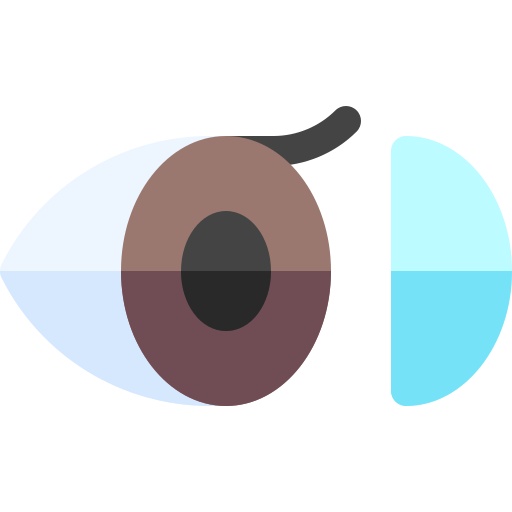
NCT
NCT (Non-Contact Tonometry)
NCT (Non-Contact Tonometry):
- A method for measuring intraocular pressure (IOP), the fluid pressure within the eye.
- Key feature: Uses a puff of air to gently flatten the cornea and measure the resulting pressure.
- Benefits:
- Non-invasive: No direct contact with the eye, reducing the risk of infection.
- Quick and easy: Minimal patient cooperation required.
- Suitable for various populations: Including children and those who may be anxious about eye exams.
Importance for Ophthalmologists:
- Glaucoma Screening: Elevated IOP is a significant risk factor for glaucoma, a leading cause of irreversible vision loss. NCT is a valuable tool for screening patients for glaucoma during routine eye exams.
- Glaucoma Monitoring: Used to monitor the effectiveness of glaucoma medications or surgeries in controlling IOP.
- Patient Comfort: Provides a more comfortable and less intimidating experience for many patients compared to traditional tonometry methods.
In essence, NCT is a valuable addition to an ophthalmologist's arsenal for diagnosing and managing glaucoma, a crucial aspect of eye care.
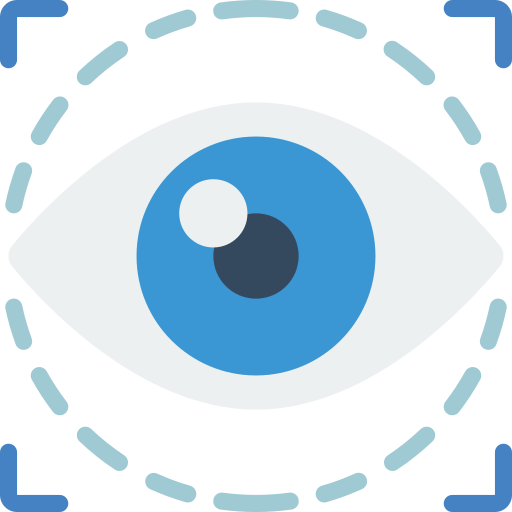
OCT
OCT (Optical Coherence Tomography)
- OCT (Optical Coherence Tomography):
- A non-invasive imaging technique that uses light waves to create high-resolution, cross-sectional images of the retina and other structures within the eye.
- Like an ultrasound for the eye: It provides detailed 3D images of the different layers of the retina, allowing for precise measurements and assessments.
- Key Benefits for Ophthalmologists:
- Early Detection:
- Detects subtle changes in the retina and optic nerve, often before noticeable vision loss occurs.
- Crucial for early diagnosis of conditions like glaucoma, macular degeneration, and diabetic retinopathy.
- Precise Diagnosis:
- Provides detailed information about the extent and severity of eye diseases.
- Helps differentiate between various types of macular degeneration, for example.
- Treatment Monitoring:
- Tracks the progression of eye diseases and assesses the effectiveness of treatment (e.g., medications, laser therapy).
- Allows for adjustments to treatment plans as needed.
- Improved Patient Care:
- Enables more accurate diagnoses and treatment plans, leading to better patient outcomes and potentially preserving vision.
- Early Detection:
In essence, OCT is a revolutionary tool for ophthalmologists, providing invaluable insights into the health of the retina and optic nerve, leading to earlier detection, more accurate diagnoses, and improved patient care.
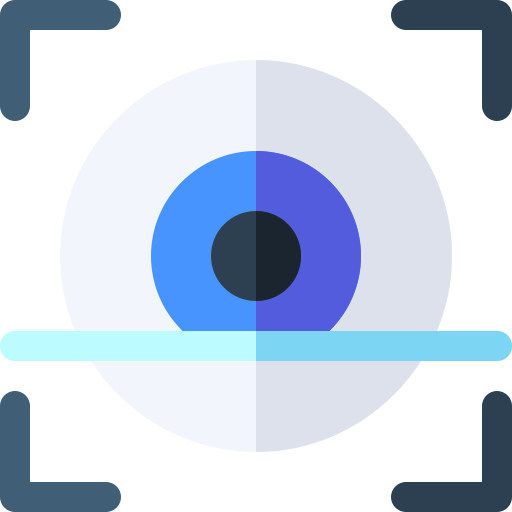
A & B Scan
A-scan (Amplitude Scan)
- A-scan (Amplitude Scan):
- Purpose: Primarily used to measure the length of the eye. This measurement is crucial for determining the correct power of an intraocular lens (IOL) for cataract surgery.
- How it works: Uses high-frequency sound waves to measure the distance between the front and back surfaces of the eye.
- Benefits:
- Accurate IOL power calculations, leading to improved visual outcomes after cataract surgery.
- Quick and relatively simple procedure.
- B-scan (Brightness Scan):
- Purpose: Creates two-dimensional images of the eye's internal structures, including the retina, optic nerve, and vitreous humor.
- How it works: Uses sound waves to generate cross-sectional images of the eye.
- Benefits:
- Diagnosing various eye conditions:
- Retinal detachments
- Tumors within the eye
- Foreign bodies
- Vitreous hemorrhages (bleeding in the eye)
- Evaluating eye trauma: Assessing the extent of damage after eye injuries.
- Useful when other imaging techniques are limited: Such as in cases of dense cataracts that obstruct a clear view of the inside of the eye.
- Diagnosing various eye conditions:
In essence, A-scans help determine the correct lens for cataract surgery, while B-scans provide valuable information about the internal structures of the eye to diagnose and manage various eye conditions.
Note: Both A-scans and B-scans are non-invasive and generally well-tolerated by patients
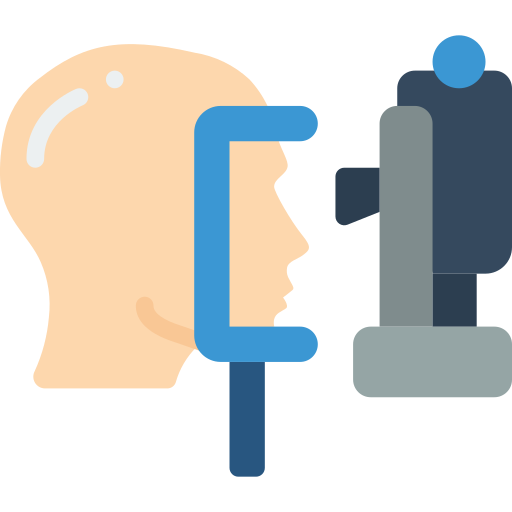
IOL Master
IOL MASTER
- What it is: The IOLMaster is a highly accurate and advanced device used in ophthalmology to measure the length of the eye. This measurement is crucial for determining the correct power of an intraocular lens (IOL) that will be implanted during cataract surgery.
- How it works:
- Optical Biometry: It utilizes optical technology (partial coherence interferometry) to measure the distance from the front surface of the cornea to the back of the eye (retina).
- Non-contact: The IOLMaster does not touch the eye, making it a comfortable and safe procedure for patients.
- Benefits for Ophthalmologists:
- Improved Accuracy: Provides more precise measurements compared to traditional methods, leading to more accurate IOL power calculations.
- Enhanced Surgical Outcomes: Helps achieve better visual outcomes after cataract surgery by minimizing the need for post-operative adjustments to the IOL.
- Increased Patient Satisfaction: Contributes to higher patient satisfaction by improving the predictability of visual outcomes.
- Key Features:
- Fast and Efficient: Performs measurements quickly, improving workflow efficiency in the ophthalmology practice.
- User-friendly: Easy to operate and interpret results.
- Versatile: Can be used for a wide range of patients, including those with challenging eye conditions.
In essence, the IOLMaster is a valuable tool for ophthalmologists, enabling them to perform more accurate cataract surgeries and provide better visual outcomes for their patients.

Green Laser
Green Laser in Ophthalmology
Green Laser in Ophthalmology:
- Type of Laser: A specific type of laser used to treat various eye conditions.
- Wavelength: Emits light at a specific wavelength (around 532 nanometers), which is well-absorbed by the pigment in the retina.
- Common Uses:
- Diabetic Retinopathy: Treats abnormal blood vessels that grow on the retina due to diabetes.
- Macular Edema: Reduces swelling in the macula, the central part of the retina responsible for sharp, central vision.
- Retinal Tears and Detachments: Treats retinal tears to prevent them from progressing to retinal detachment.
- How it Works:
- The green laser light is focused on the affected areas of the retina.
- The light energy is absorbed by the pigment in the retina, creating tiny burns that:
- Seal leaking blood vessels: In diabetic retinopathy and macular edema.
- Strengthen the weakened areas of the retina: To prevent retinal tears from progressing.
- Benefits:
- Minimally Invasive: A non-surgical procedure with minimal discomfort.
- Effective Treatment: Can significantly improve vision and prevent vision loss in many cases.
- Outpatient Procedure: Usually performed in an outpatient setting, allowing patients to return home the same day.
In essence, the green laser is a valuable tool for ophthalmologists in managing various retinal diseases and preserving vision.
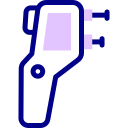
YAG Laser
YAG Laser
YAG Laser:
- Stands for Yttrium-Aluminum-Garnet laser.
- Emits a specific type of laser light used for various eye procedures.
Common Use in Ophthalmology:
- Posterior Capsulotomy:
- This is the most common use of the YAG laser in ophthalmology.
- After cataract surgery, a thin, clear membrane (posterior capsule) remains behind the artificial lens implant.
- Sometimes, this capsule can become cloudy, a condition called posterior capsule opacification (PCO) or "secondary cataract."
- YAG laser capsulotomy creates a tiny opening in the cloudy capsule, allowing light to pass through again and restoring clear vision.
How it Works:
- The YAG laser emits a short burst of energy that creates a small opening in the cloudy capsule.
- The procedure is typically quick and painless, performed in the doctor's office.
Benefits:
- Highly effective: Successfully restores clear vision in most cases.
- Minimally invasive: A quick and simple procedure with minimal discomfort.
- Outpatient procedure: Patients can usually return to normal activities shortly after the procedure.
In essence, the YAG laser is a valuable tool for ophthalmologists to treat a common complication after cataract surgery, allowing patients to regain clear vision.

Fundus Camera
Fundus Camera
Fundus Camera:
- A specialized medical device used to take photographs of the inside back of the eye, specifically the fundus.
- The fundus is the inner surface of the eye, including the retina, optic nerve, blood vessels, and macula.
Purpose:
- Diagnosis and Monitoring of Eye Diseases: Fundus photography helps doctors:
- Detect and diagnose eye diseases: Such as diabetic retinopathy, age-related macular degeneration, glaucoma, and other retinal conditions.
- Monitor the progression of eye diseases: Track changes in the appearance of the retina over time to assess the effectiveness of treatment.
- Document findings: Create a visual record of the patient's eye condition for future reference.
How it Works:
- The patient typically sits in front of the camera, resting their chin and forehead on a support.
- The camera uses a bright light to illuminate the inside of the eye.
- The camera then takes a picture of the fundus.
Types of Fundus Cameras:
- Standard Fundus Cameras: Often require pupil dilation (eye drops to widen the pupil) for optimal imaging.
- Wide-field Fundus Cameras: Can capture a wider area of the retina, sometimes without the need for pupil dilation.
In essence, a fundus camera is a valuable tool for ophthalmologists to diagnose, monitor, and manage various eye diseases, helping to preserve vision and improve patient outcomes.

Alcon Centurion Phaco System
Alcon centurion phaco system
- What it is: The Alcon Centurion Phaco System is a state-of-the-art surgical platform designed for cataract surgery and other related procedures.
- Key Features:
- Advanced Technology:
- Active Fluidics: This technology dynamically adjusts fluid flow during surgery, helping to maintain stable eye pressure and improve surgical control.
- Balanced Energy: Minimizes the use of ultrasound energy, reducing the risk of complications and promoting faster healing.
- Ozil Torsional Technology: Utilizes a unique oscillating motion to efficiently break up the cataract, improving surgical efficiency and reducing surgical time.
- Enhanced Precision:
- Precise control over surgical parameters allows for customized procedures tailored to individual patient needs.
- Improved accuracy in implanting the intraocular lens (IOL), leading to better visual outcomes.
- Improved Patient Outcomes:
- Reduced surgical time and faster recovery.
- Minimized risk of complications.
- Enhanced visual outcomes with improved accuracy in IOL placement.
- Benefits for Surgeons:
- Increased efficiency and control during surgery.
- Improved surgical outcomes and patient satisfaction.
- Enhanced safety and precision.
- Increased efficiency and control during surgery.
- Advanced Technology:
In essence, the Alcon Centurion Phaco System represents a significant advancement in cataract surgery technology, offering surgeons greater control, precision, and efficiency, ultimately leading to improved patient outcomes.

Laureate world Phaco
system
Laureate World Phaco system
- Laureate World Phaco System: This is a phacoemulsification system manufactured by Alcon, a leading global provider of eye care products.
- What is Phacoemulsification?
- It's the most common surgical procedure for removing cataracts, the clouding of the eye's natural lens.
- The phaco machine uses ultrasound energy to break up the cataract into small pieces, which are then removed from the eye.
- Key Features of the Laureate World Phaco System:
- Advanced Technology: Incorporates cutting-edge technology for precise and efficient cataract removal.
- Enhanced Control: Provides surgeons with greater control over various surgical parameters, such as ultrasound power, fluidics, and vacuum.
- Improved Safety: Designed to minimize complications and maximize patient safety.
- Versatility: Can be used for a wide range of cataract cases, including complex ones.
- Benefits for Surgeons:
- Increased Efficiency: Improves surgical workflow and reduces procedure time.
- Enhanced Precision: Allows for more precise and controlled cataract removal.
- Improved Patient Outcomes: Helps achieve better surgical outcomes and faster patient recovery.
In essence, the Laureate World Phaco System is a sophisticated surgical tool that enables ophthalmologists to perform cataract surgery with greater precision, efficiency, and safety, ultimately leading to improved patient outcomes.

Vitrectomy
Machine
Vicrectomy Machine
- A specialized surgical device used to perform vitrectomy, a surgical procedure to remove the vitreous gel from inside the eye.
- The vitreous is the jelly-like substance that fills the space between the lens and the retina.
Purpose of Vitrectomy:
- Treat various eye diseases:
- Retinal detachment: When the retina, the light-sensitive layer at the back of the eye, separates from the underlying tissue.
- Vitreous hemorrhage: Bleeding within the vitreous humor.
- Macular holes: Tears in the central part of the retina.
- Diabetic retinopathy: Damage to the blood vessels in the retina caused by diabetes.
- Other conditions: Such as eye inflammation and certain types of tumors.
How it Works:
- The vitrectomy machine utilizes a small incision in the eye to insert tiny instruments.
- These instruments, controlled by the surgeon, carefully remove the vitreous gel.
- Depending on the condition being treated, the surgeon may also perform other procedures during vitrectomy, such as:
- Repairing retinal tears
- Removing scar tissue
- Treating abnormal blood vessels
Key Components of a Vitrectomy Machine:
- Vitrector: A specialized instrument that cuts and removes the vitreous gel.
- Infusion system: Maintains the eye's shape and pressure during surgery.
- Illumination system: Provides bright light for the surgeon to see inside the eye.
- Control panel: Allows the surgeon to adjust various settings, such as cutting speed and vacuum.
In essence, a vitrectomy machine is a sophisticated surgical tool that enables ophthalmologists to perform complex eye surgeries with precision and accuracy, helping to restore vision and improve the quality of life for patients with various eye conditions.

Modular Exclusive Operation theater
13. Modular Exclusive operation theater for opthomologists
A modular exclusive operation theater specifically designed for ophthalmologists offers several unique advantages:
Key Considerations for Ophthalmic Modular OTs:
- Specialized Equipment:
- Microscope: A high-quality surgical microscope with excellent magnification and illumination is crucial for delicate eye surgeries.
- Coherence Tomography Imaging (OCT) System: Integrated OCT systems allow for real-time imaging during surgery, enhancing precision.
- Phacoemulsification Machine: A specialized machine for cataract surgery, often with advanced features for improved efficiency and safety.
- YAG Laser: For performing laser procedures like posterior capsulotomies.
- Fundus Camera: For pre- and post-operative documentation.
- Ergonomics:
- Surgeon Comfort: The OT should be designed to minimize surgeon fatigue, with adjustable height and comfortable positioning.
- Efficient Workflow: A well-designed layout ensures smooth and efficient movement of instruments and personnel.
- Asepsis and Infection Control:
- Laminar Airflow: High-quality air filtration systems to maintain a sterile environment.
- Antimicrobial Surfaces: Walls, floors, and ceilings should be made of easy-to-clean, antimicrobial materials.
- Strict Sterilization Protocols: Dedicated areas for instrument sterilization and preparation.
- Technology Integration:
- High-Definition Cameras and Monitors: For clear visualization of the surgical field and teaching purposes.
- Integrated Data Systems: For seamless documentation and data management.
- Flexibility and Adaptability:
- Modular Design: Allows for easy reconfiguration to accommodate different types of ophthalmic procedures.
- Future-Proofing: The OT should be designed to accommodate future advancements in ophthalmic technology.
Benefits for Ophthalmologists:
- Improved Surgical Outcomes: Enhanced precision, reduced surgical time, and improved patient safety.
- Increased Efficiency: Streamlined workflow and optimized equipment placement improve efficiency.
- Enhanced Patient Comfort: A comfortable and reassuring environment for patients undergoing eye surgery.
- Improved Professional Satisfaction: A well-equipped and ergonomically designed OT can enhance the surgeon's experience and job satisfaction.
In essence, a modular exclusive operation theater tailored for ophthalmology provides a dedicated and optimized surgical environment, enhancing the quality of care and improving outcomes for patients undergoing eye surgeries.

Theaters with General Anaesthesia Facility
Auto Refractormeter
This is for informational purposes only. For medical advice or diagnosis, consult a professional.
- What it is: An automated device that objectively measures the eye's refractive error.
- How it works:
- Shines light into the eye.
- Measures how the light changes as it reflects off the retina.
- Determines the amount of correction needed for clear vision.
- Benefits:
- Quick and objective: Provides fast and accurate measurements.
- Useful for various populations: Especially helpful for children and those with difficulty communicating.
- Purpose: Helps eye care professionals determine the most suitable prescription for glasses or contact lenses.
In simpler terms, it's like an automated eye exam that helps doctors figure out your eyeglass prescription.

Field Analyzer for
Glaucoma
Field Analyzer for Glaucoma
A visual field analyzer is a crucial tool in the diagnosis and management of glaucoma. It's used to measure a person's peripheral (side) vision.
- How it works: The patient sits in front of the machine and focuses on a central point. A series of lights are flashed at different points within the visual field. The patient presses a button whenever they see a light.
- Why it's important for glaucoma: Glaucoma often damages the optic nerve, which can lead to gradual loss of peripheral vision. Visual field tests help:
- Detect early signs of glaucoma: By identifying areas of vision loss that may not be noticeable to the patient.
- Monitor disease progression: Track changes in the visual field over time to assess the effectiveness of treatment.
- Guide treatment decisions: Help determine the best course of treatment for individual patients.
- Common type: The Humphrey Field Analyzer is a widely used and well-established type of visual field analyzer.
If you suspect you may have glaucoma, it's crucial to consult with an eye doctor for a comprehensive eye exam, including visual field testing.
Early detection and treatment can help prevent significant vision loss.
Sources and related content

Sirrus
Sirrus
- In ophthalmology, "Sirrus" typically refers to the CSO Sirius+, a corneal topographer and tomographer.
- What it does:
- Measures corneal shape: It creates detailed 3D maps of the front and back surfaces of the cornea.
- Assesses corneal health: Helps diagnose conditions like keratoconus, corneal ectasia, and other corneal irregularities.
- Aids in surgical planning: Provides crucial data for refractive surgery procedures like LASIK, PRK, and cataract surgery.
- Evaluates dry eye: Assesses tear film stability and identifies potential contributing factors.
- Key Features:
- Combined technology: Integrates Placido disc topography and Scheimpflug tomography for comprehensive corneal analysis.
- High-resolution imaging: Provides detailed and accurate measurements of corneal shape and thickness.
- User-friendly interface: Easy to operate and interpret results.
- Versatility: Can be used for a wide range of diagnostic and surgical planning purposes.
In essence, the CSO Sirius+ is a valuable tool for ophthalmologists, providing crucial information about the cornea and helping to ensure the success of various eye surgeries and treatments.

Operation theatre with Laminar Flow
Operation theatre with Laminar Flow
- Laminar Flow Operation Theaters: These are specialized surgical suites designed to minimize the risk of airborne infections during surgery.
- How they work:
- Laminar Flow: A system of high-efficiency particulate air (HEPA) filters is installed in the ceiling or walls.
- Clean Air: These filters continuously supply a unidirectional stream of sterile air over the surgical field.
- Reduced Contamination: This constant flow of clean air helps to minimize the presence of airborne particles, bacteria, and other contaminants in the operating room.
- Benefits:
- Reduced Risk of Infection: Significantly reduces the risk of surgical site infections, which can have serious consequences for patients.
- Improved Patient Safety: Creates a safer environment for both patients and surgical staff.
- Enhanced Surgical Outcomes: Minimizes the risk of complications related to infection.
- Applications:
- Orthopedic Surgery: Widely used in orthopedic surgeries, particularly joint replacement surgeries.
- Other Surgeries: Also used in other specialties, such as neurosurgery, cardiovascular surgery, and plastic surgery.
- Key Components:
- HEPA Filters: High-efficiency particulate air filters that remove nearly all airborne particles.
- Air Handling Units: Control the flow of air within the operating room.
- Monitoring Systems: Monitor air quality and ensure proper functioning of the laminar flow system.
In essence, laminar flow operation theaters provide a highly controlled and sterile environment for surgical procedures, significantly reducing the risk of infection and improving patient safety.

Lumeira Eye Operating Microscop
Lumeira Eye Operating Microscope
- What is the Lumeira Eye Operating Microscope?
The OPMI Lumera is a line of advanced surgical microscopes manufactured by Carl Zeiss Meditec. They are designed specifically for ophthalmic procedures, offering superior image quality and precision for a wide range of surgeries.
- Key Features:
- Stereo Coaxial Illumination (SCI): This unique lighting technology provides exceptional brightness and contrast, making it easier to see details within the eye, even in challenging cases.
- High-quality optics: Deliver sharp, clear images with excellent depth perception.
- Ergonomic design: Promotes comfort and efficiency for the surgeon.
- Advanced features: May include integrated imaging systems, touch-screen controls, and other advanced features depending on the specific Lumera model.
- Models:
- OPMI Lumera 700: A high-end model with advanced features like integrated OCT (Optical Coherence Tomography) for real-time imaging during surgery.
- OPMI Lumera T: A versatile model designed for a wide range of ophthalmic procedures.
- OPMI Lumera i: A more compact and cost-effective model that still offers excellent performance.
- Benefits for Surgeons:
- Improved visualization: Enhanced clarity and depth perception lead to increased precision and accuracy during surgery.
- Increased efficiency: Streamlined workflow and ergonomic design help improve surgical efficiency.
- Enhanced patient safety: Improved visualization and precision can help minimize complications and improve patient outcomes.
In essence, the Lumeira line of surgical microscopes represents a significant advancement in ophthalmic technology, providing surgeons with the tools they need to perform complex eye surgeries with greater precision, efficiency, and safety.
Technologies We Use
Rishab Eye Care Hospital is dedicated to providing exceptional eye care with a focus on advanced treatments, personalized care, and cutting-edge technology. Our expert team of ophthalmologists offers a wide range of services, from routine eye exams to complex surgeries, ensuring that each patient receives the highest standard of care.
- Laser Cataract Surgery: Utilizing state-of-the-art laser technology for precise and minimally invasive cataract procedures.
- Robotic Surgery: Advanced robotic systems for accurate and efficient cataract and retinal surgeries.
- Optical Coherence Tomography (OCT): Non-invasive imaging for detailed eye scans, helping diagnose and treat retinal conditions.
- Phacoemulsification Systems: Modern machines for safe and effective cataract removal with minimal recovery time.
- Fundus Camera & Retina Imaging: High-resolution cameras for detailed imaging of the retina to monitor eye health.
- Retinal Laser Treatments: For conditions like diabetic retinopathy and retinal detachment, using precise laser technology.
Our Care Approach

Patient-Centered Care
We prioritize patient comfort, offering individualized treatment plans and a compassionate approach to every case.

Expert Team
Our experienced ophthalmologists and staff are committed to staying at the forefront of the latest advancements in eye care.

Comprehensive Services
From routine check-ups to specialized surgeries, we offer a full spectrum of eye care services to meet every patient's needs.

Immediate Care, 24/7
No matter the time, you can count on our experienced team to provide prompt, high-quality care in emergency situations.
